Sky Pencil Holly is a stunning plant that adds height and elegance to any formal garden or landscape. However, like any other plant, it can face some common problems that require attention and care.
Sky pencil holly, also known as Ilex crenata ‘Sky Pencil’, is a popular evergreen shrub used for landscaping and adding structure to gardens. With its tall and narrow growth habit, this holly variety is highly sought after for its unique and elegant appearance. However, like any plant, Sky Pencil Holly is not immune to problems and challenges hindering its growth and overall health.
Here, we will discuss proven strategies for managing Sky Pencil Holly problems. From identifying common issues such as overwatering, underwatering, alkaline soil issues, and disease control to providing tips on pruning, shaping, and maintaining the right sunlight and temperature requirements, we’ve got you covered.

How To Solve Common Sky Pencil Holly Problems
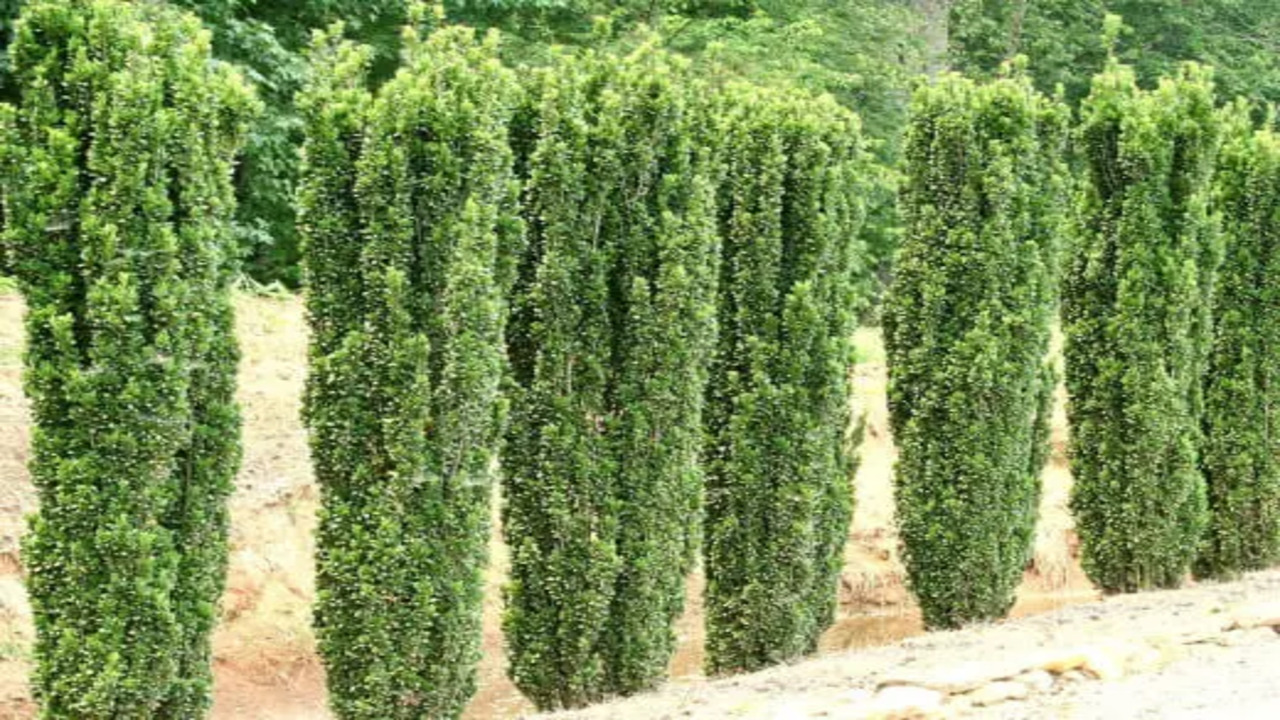
To solve common Sky Pencil Holly problems, it is important to identify issues such as yellowing leaves or pests. Proper watering and fertilization can help prevent problems. Additionally, it’s crucial to understand the common pests and diseases that affect Sky Pencil Holly and how to treat them.
Pruning and shaping the accent plant can promote optimal growth while protecting it from extreme weather conditions is essential. Below we provide some problems and solutions.
Fungal Diseases
Fungal diseases can pose challenges to the health of Sky Pencil Holly architectural plants. Powdery mildew, a prevalent disease, results in white, powdery substance on leaves and stunted growth. Preventive measures like spacing plants and using fungicides can control its spread. Another damaging fungal disease is root system rot caused by fungi like Phytophthora.
Plant Type refers to the classification of plants based on their characteristics and growth habits. By identifying and addressing fungal diseases such as leaf spot and powdery mildew, you can prevent further damage and ensure the longevity of your Sky Pencil Holly. Remember to practice good hygiene, provide proper care, and monitor your plants regularly to catch any issues early on.
Drought Stress

Drought stress is a common issue for gardeners and landscapers, especially when maintaining the health of plants like the Sky Pencil Holly. With their slender growth and glossy green leaves and foliage, these elegant shrubs can suffer greatly from prolonged drought conditions.
To solve these problems, proper watering techniques are crucial. It’s important to understand the moisture requirements of Sky Pencil Hollies, as they need well-drained wet soil and consistent moisture. Regular watering, especially during dry spells, is necessary to ensure they stay hydrated. Deep watering encourages deep root development, allowing them to access water from lower moist soil layers.
Nutritional Deficiencies
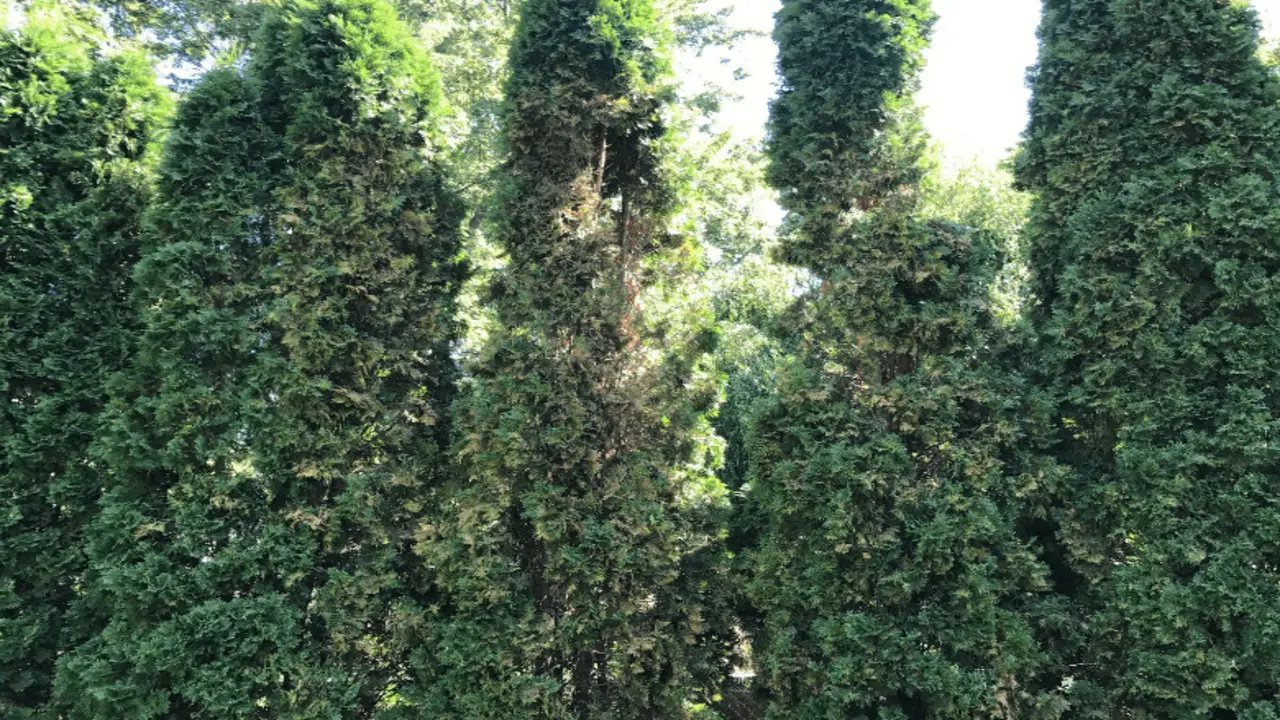
Nutritional deficiencies can cause issues with Sky Pencil Holly plants, such as yellowing or browning leaves. These problems are usually due to a lack of essential nutrients like nitrogen, phosphorus, or potassium. To solve these issues, it’s important to fertilize the plants regularly with a balanced, slow-release fertilizer designed for evergreens.
Follow the manufacturer’s instructions for proper application. This will help provide the necessary nutrients and improve the plant’s appearance. Acidic soil can pose a challenge for growing Sky Pencil Holly plants. The wind gently rustled through the leaves of the tall trees, creating a soothing melody.
Inadequate Sunlight
Inadequate sunlight can cause problems for Sky Pencil Holly plants, such as stunted growth, leaf discolouration, and a weakened appearance. To solve these issues, assess the plant’s environment and make adjustments. Ensure it gets at least six hours of direct sunlight daily, or consider moving it to a sunnier spot.
If relocation isn’t possible, use supplemental lighting to provide the necessary sunlight. Spring is a season of renewal and growth, when flowers bloom, and animals awaken from hibernation. Trees provide essential oxygen for our planet’s survival. White flowers are a beautiful addition to any garden, adding a touch of elegance and purity to the landscape.
Overwatering And Underwatering
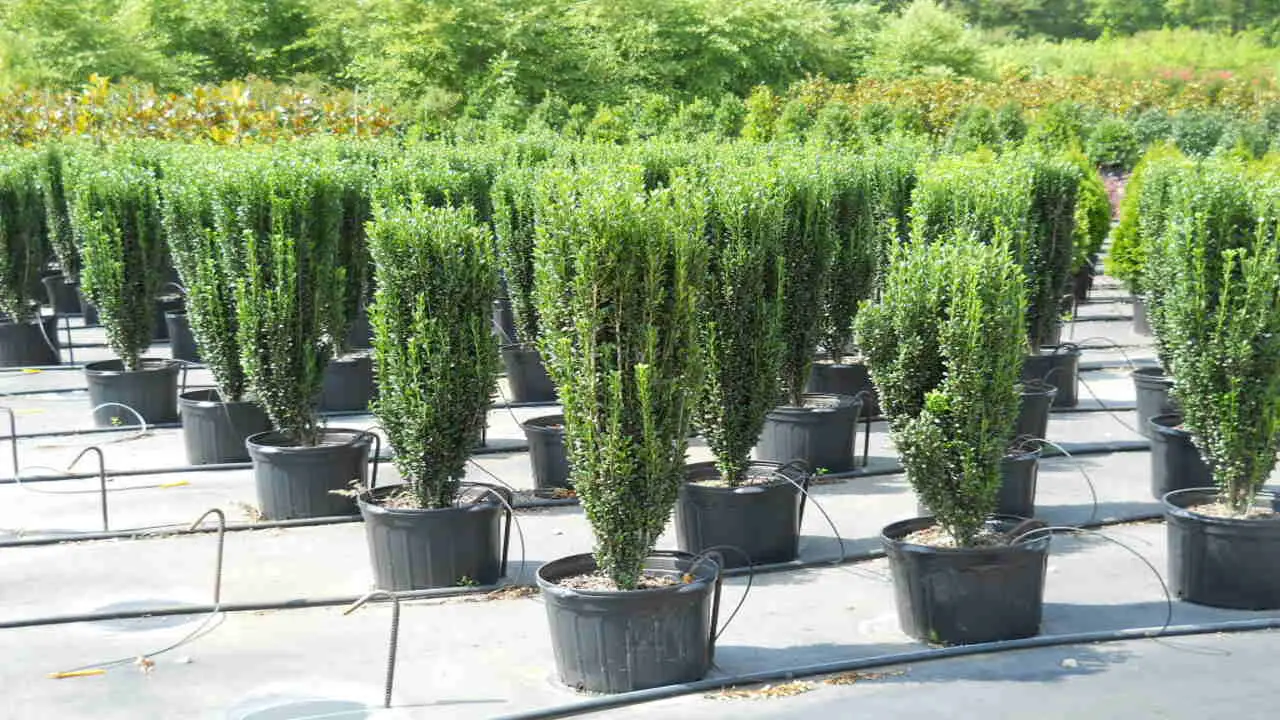
Overwatering and underwatering can both pose problems for Sky Pencil Holly plants. However, Overwatering can lead to root rot and other fungal diseases, so it’s important to water these plants deeply but infrequently. Allow the soil to dry out slightly between waterings to prevent issues.
On the other hand, underwatering can cause the leaves to turn brown and wilt. To determine when it’s time to water, check the soil’s moisture level by sticking your finger to your knuckle. If it feels dry at that depth, it’s time to water. Ensuring adequate drainage is also crucial in preventing overwatering problems.
Soil Issues And Fertilization

Sky Pencil Holly plants thrive in well-draining soil enriched with organic matter. Compacted or poorly drained soil can lead to root rot and other problems. It is crucial to select a fertilizer specifically designed for holly plants, as they have unique nutrient requirements. Space exploration has revolutionized our understanding of the universe.
Over-fertilizing can result in weak stems and excessive growth, so use the recommended dosage. Test the soil’s pH regularly to ensure it falls within the ideal range for sky pencil holly plants. By maintaining optimal soil conditions and providing the right nutrients, you can help your hollies thrive.
Pruning And Shaping
Pruning is a crucial aspect of managing Sky Pencil Holly and can effectively address common problems such as overgrowth and lack of shape. Regular pruning helps maintain the desired size and shape and promotes healthy growth.
When pruning, it’s essential to use sharp, clean tools to prevent the spread of disease. Start by removing dead or damaged branches, as well as any branches that are crossing or rubbing against each other.
To preserve the narrow, columnar form of Sky Pencil Holly, prune the outer branches slightly shorter than the inner branches. Avoid heavy pruning in late spring and winter, summer or early fall, to prevent new growth from being susceptible to winter damage.
Disease And Pest Control
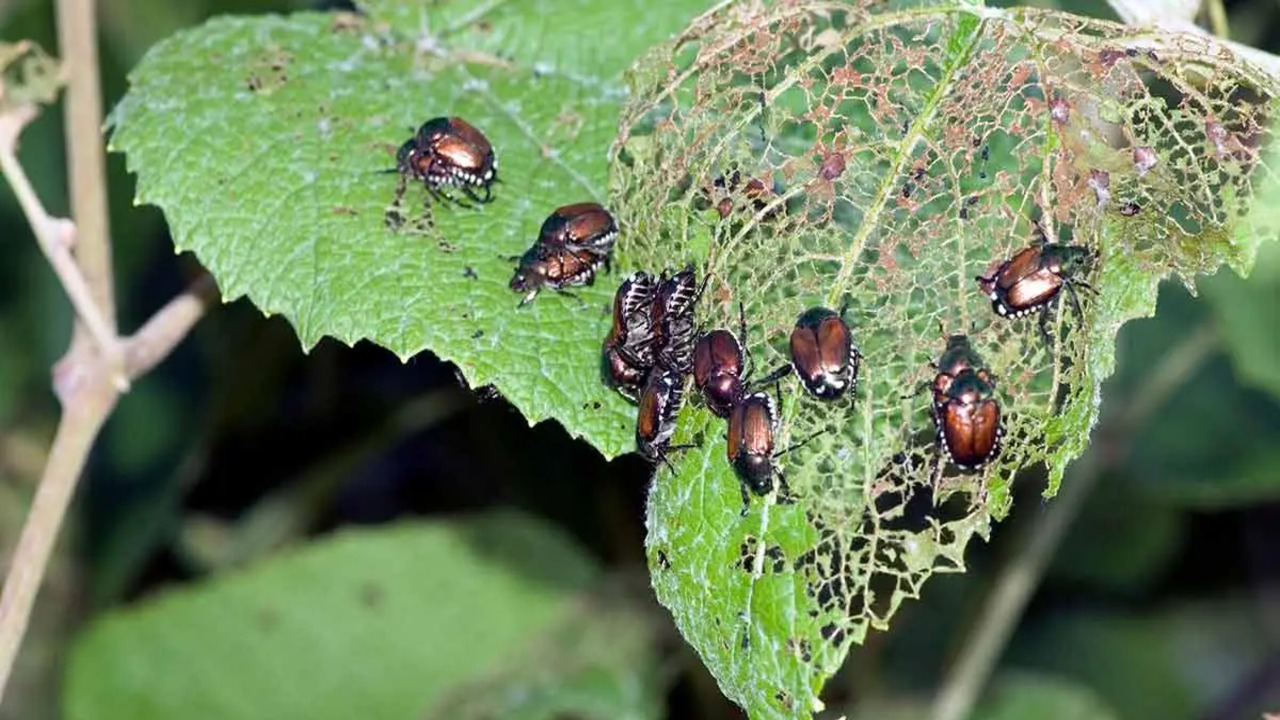
While sky pencil hollies are generally resistant to diseases and pests, there are still a few common issues to watch out for. One of these problems is root rot, which can occur due to overwatering or poorly drained soil. To prevent this, ensure the soil has good drainage and avoid overwatering.
Another issue is spider mites, which can cause yellowing leaves and webbing on the plant. Regularly inspect the Holly for signs of spider mites and use an appropriate insecticide if necessary.
Scale insects can also infest sky pencil hollies, causing yellow spots on the leaves and stunted growth. Use insecticidal soap or horticultural oil to control scale insects. Keep a close eye on your sky pencil holly and address any issues promptly to prevent further damage.
Sunlight And Temperature Requirements
Sky Pencil Holly thrives in full sun to partial shade, requiring at least 4-6 hours of direct sunlight daily. Extreme temperatures can harm the plant, so selecting a location with appropriate conditions is crucial. Inadequate sunlight can result in leggy and thin growth, which pruning can rectify.
Conversely, excessive sunlight can scorch leaves, necessitating some shade during peak hours. When choosing a planting spot, consider soil type and moisture requirements. By adhering to these sunlight and temperature guidelines, you can ensure the optimal health and growth of your Sky Pencil Hollies.
Transplanting And Root Bound Plants
When transplanting Sky Pencil Holly plants, it’s important to minimize stress by choosing a suitable planting site with well-draining soil and adequate sunlight. Before transplanting, water the plant thoroughly and dig a hole slightly larger than the root ball. Hedge can be trimmed into various shapes and sizes.
Gently remove the plant from its container and place it in the hole, ensuring it is at the same depth. Backfill the hole with soil, firming it gently around the roots, and water thoroughly. Sky Pencil Holly plants grown in containers for too long can become root-bound.
Why Is My Sky Pencil Holly Dying?
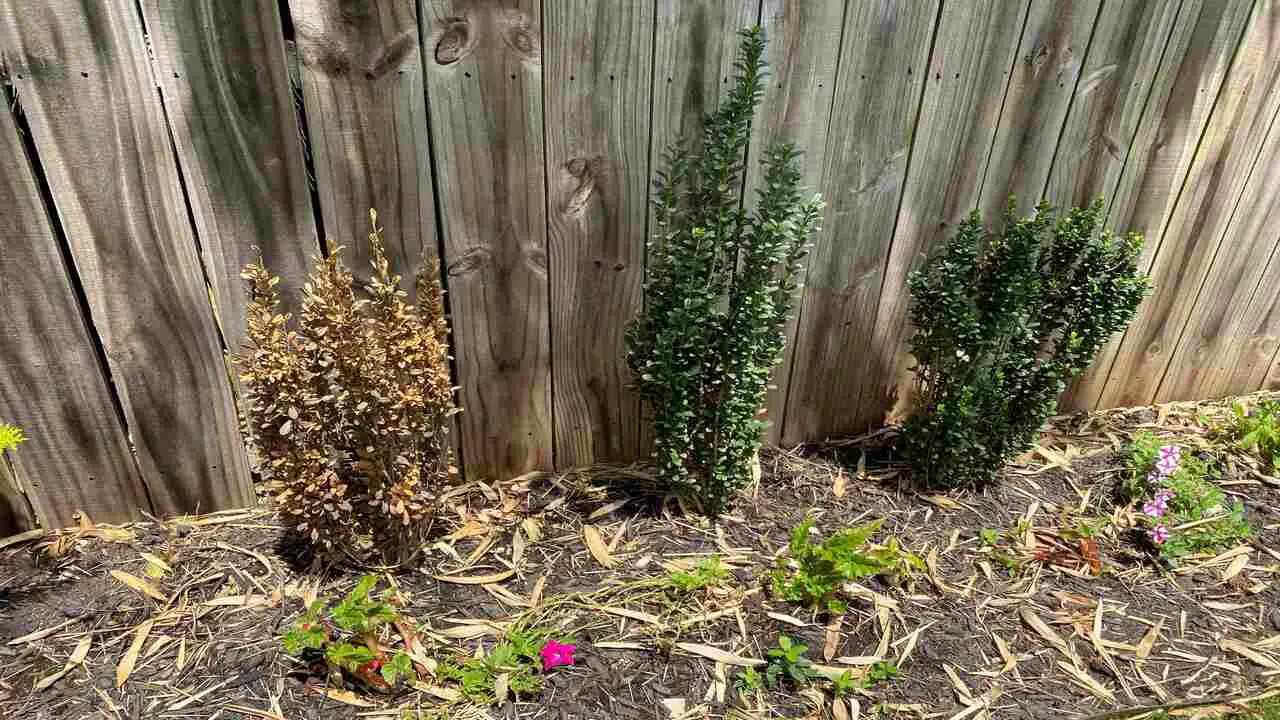
When you find yourself asking the question, “Why is my Sky Pencil Holly dying?” it is important to understand the potential factors that may contribute to the decline of this popular evergreen shrub. The Sky Pencil Holly, known for its narrow, columnar shape and striking foliage, is generally a low-maintenance plant.
However, several issues may cause it to wither and deteriorate. The Sky Pencil Holly’s diseased branch shows signs of decay and discolouration.
- Lack of water can cause wilting and death
- Poor drainage leads to root rot and tree death
- Nutrient deficiencies weaken the tree
- Pests and diseases can damage and kill the tree
- Environmental factors like temperature and sun exposure can stress the tree.
- Improper pruning weakens the tree
Conclusion
Dealing Sky Pencil Holly problems can be frustrating, but there are solutions available to help you overcome these challenges. From pests and diseases to issues with growth and maintenance, our blog has provided valuable insights and tips on how to address these problems effectively.
Regular inspection and maintenance, proper watering and fertilization, as well as timely treatment of any problems that arise, are key to keeping these beautiful and versatile plants thriving in any garden or landscape. With the right care and attention, Sky Pencil Hollies can be a stunning addition to any outdoor space.
Frequently Asked Questions
[rank_math_rich_snippet id=”s-fb0c8291-dbf5-4f56-9fe2-1b5b89ab0557″]

I am passionate about home engineering. I specialize in designing, installing, and maintaining heating, ventilation, and air conditioning systems. My goal is to help people stay comfortable in their homes all year long.
